7.1: Fossil Study - An Evolving Process
- Page ID
- 158756
MARY ANNING AND THE AGE OF WONDER
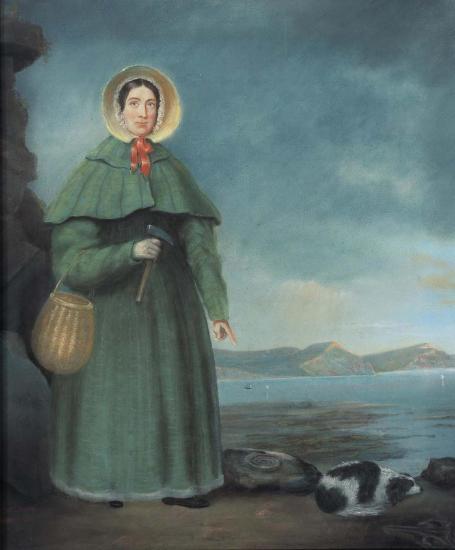
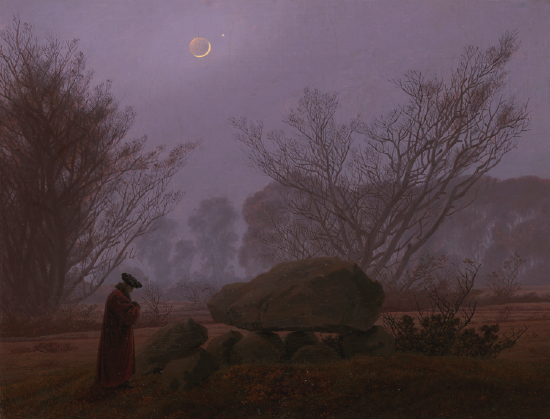
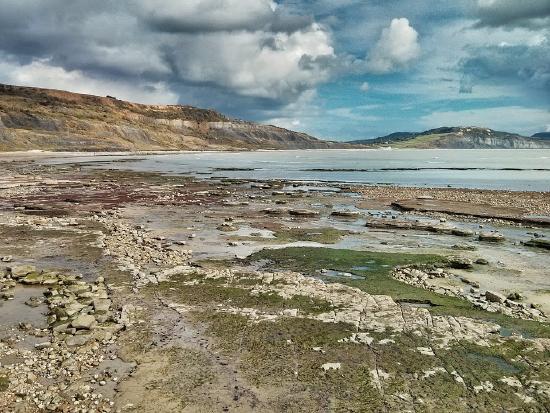
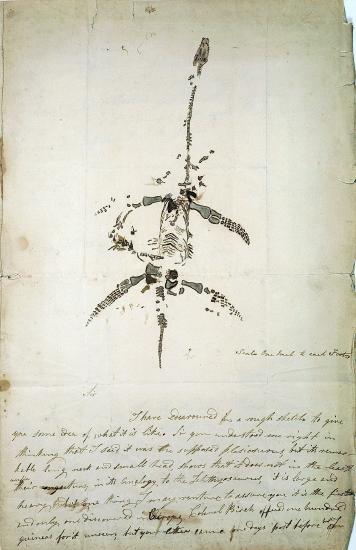
DEVELOPING MODERN METHODS
A word used to describe species that are no longer represented by living organisms.
A word used to describe species that are currently alive today.

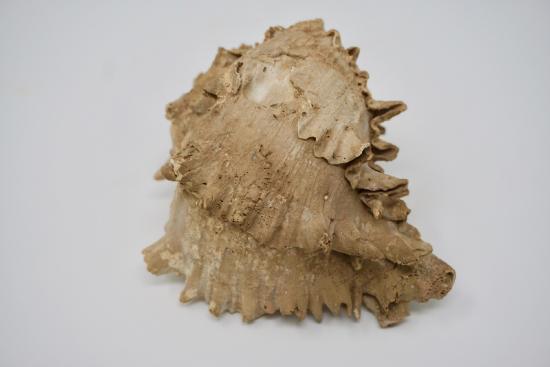
James Hutton’s theory that the world was much older than biblical explanations allowed. This age could be determined by gradual natural processes like soil erosion.
The theoretical perspective that the geologic processes observed today are the same as the processes operating in the past.
The theoretical perspective that Earth is young and that any changes in the landscape resulted from sudden catastrophic events like volcano eruptions and floods.
Mineralized copies of organisms or activity imprints.
EARTH: IT'S OLDER THAN DIRT
Scientists have developed precise and accurate dating methods based on work in the fields of physics and chemistry. Using these methods, scientists are able to establish the age of Earth as well as approximate ages of the organisms that have lived here. Earth is roughly 4.6 billion years old, give or take a few hundred million years. The first evidence for a living organism appeared around 3.5 billion years ago (bya). That is a huge amount of time to conceptualize, and many changes have taken place within that time. The scale of geologic time can seem downright overwhelming. In order to organize and make sense of Earth’s past, geologists break up that time into subunits. These subunits are human-made divisions along Earth’s timeline in the same way that inches and centimeters are human-made units that are used to divide up distance. The largest subunit is the eon. An eon is further divided into eras, and eras are divided into periods. Finally, periods are divided into epochs (see Figure 7.1.7) (Williams 2004, 37). Currently, we are living in the Phanerozoic eon, Cenozoic era, Quaternary period, and probably the Holocene epoch—though there is considerable academic debate about which epoch we are currently in.
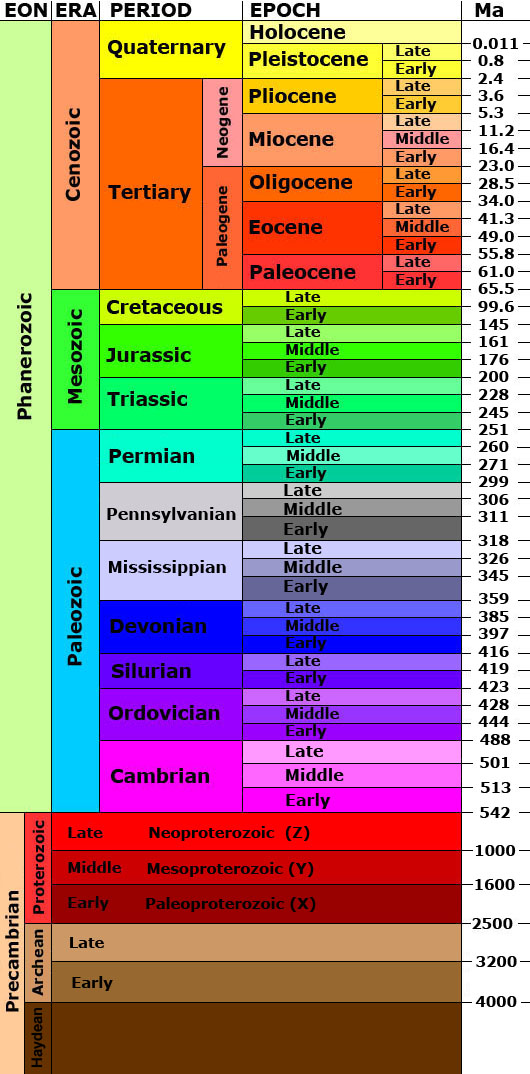
Billion years ago.
The largest unit of geologic time, spanning billions of years and divided into subunits called eras, periods, and epochs.
Units of geologic time that span millions to billions of years and that are subdivided into periods and epochs.
Geologic time units that span millions of years and are subdivided into epochs.
The smallest units of geologic time, spanning thousands to millions of years.
Though these divisions are human-made and, to some extent, arbitrary, they are based on major changes and events recorded in the geologic record. Events like significant shifts in climate or mass extinctions can be used to mark the end of one geologic time unit and the beginning of another. However, it is important to remember that these borders are not real in a physical sense; they are merely helpful organizational guidelines for scientific research. The boundaries are not fixed, and there can be significant debate regarding exact dates and names of particular periods and epochs. For instance, the current epoch has been traditionally known as the Holocene. It began around 10 thousand years ago (kya) during the warming period after that last major ice age. Some anthropologists argued that it shouldn’t be called the Holocene because it might not be a new epoch; perhaps it is simply a warm blip in a larger epoch that includes the Pleistocene. Today, there is lots of evidence to indicate human-driven climate change is warming the world and changing the environmental patterns faster than the natural cyclical processes. This has led some scientists within the stratigraphic community to argue for a new epoch beginning around 1950 with the Nuclear Age called the Anthropocene (Monastersky 2015; Waters et al. n.d.). Nobel Laureate Paul Crutzen places the beginning of the Anthropocene much earlier—at the dawn of the Industrial Revolution, with its polluting effects of burning coal (Crutzen and Stoermer 2000, 17–18). Geologist William Ruddiman argues that the epoch began 5,000–8,000 years ago with the advent of agriculture and the buildup of early methane gases (Ruddiman et al. 2008). Regardless of when the Anthropocene started, the major event that marks the boundary is the warming temperatures and mass extinction of nonhuman species caused by human activity (Figure 7.1.8). Researchers now declare that “human activity now rivals geologic forces in influencing the trajectory of the Earth System” (Steffen et al. 2018, 1).
The geologic epoch from 10 kya to present. (See the discussion on Anthropocene for the debate on the current epoch name.)
Thousand years ago.
The proposed name for our current geologic epoch based on human-driven climate change.
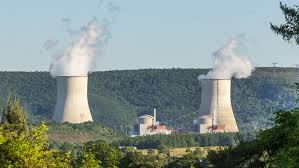 Figure \(\PageIndex{8}\): The Chooz Nuclear Power, in a valley in Ardennes, France, is a reminder that human activity impacts the planet greatly.
Figure \(\PageIndex{8}\): The Chooz Nuclear Power, in a valley in Ardennes, France, is a reminder that human activity impacts the planet greatly.GEOLOGIC PROCESSES
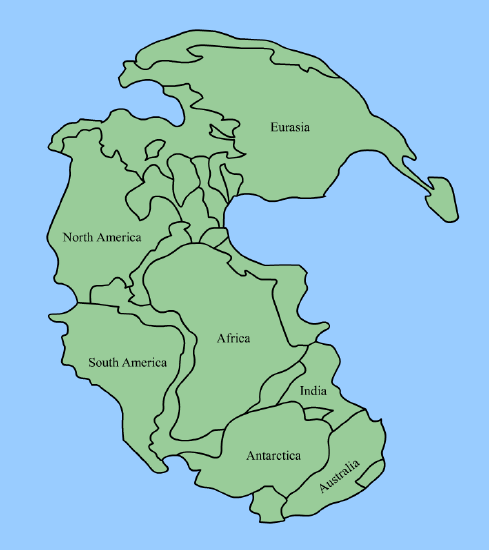 Figure \(\PageIndex{9}\): Map of Pangea reflecting the way our current continents fit into the landmass.
Figure \(\PageIndex{9}\): Map of Pangea reflecting the way our current continents fit into the landmass.Through the study of fossils, anthropologists are able to learn a great deal about the history of Earth. If you were to closely examine the map of the world, you might notice that the seven continents seem to have outlines that could fit together if rotated and adjusted like puzzle pieces (Figure 7.1.9). Moreover, the geologic features of those puzzle pieces fit together and reveal many similarities. For instance, the White Cliffs of Dover, England, geologically match La Côte d’Albâtre (the Alabaster Coast) across the English Channel in France (Figures 7.1.10 and 7.1.11).
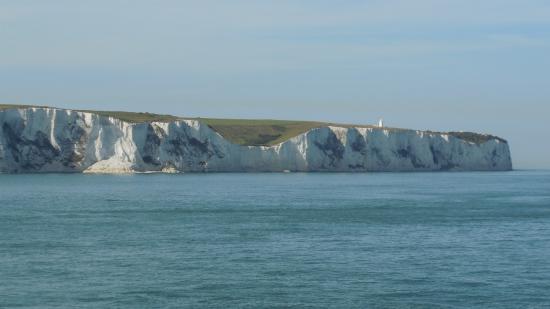

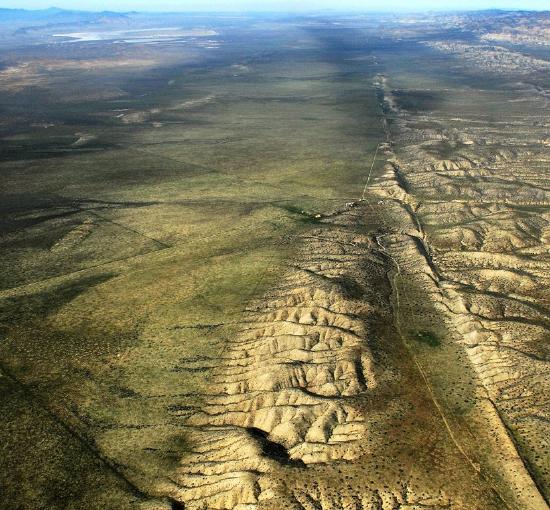
The shapes of the continents are easier to see from above and when looking at a map. From this perspective, it is not a far reach of the imagination to see how the shapes could fit together. However, in 1596, long before the advent of flight or space travel that would give such a perspective to a person studying geography, Abraham Ortelius theorized about the way the continents were shaped. Ortelius came up with the concept that one supercontinent called Pangea had existed much earlier in Earth’s history (USGS 2012). Approximately 200 million years ago (mya), Pangea started to slowly break apart, with the resulting pieces of land shifting and moving through the process of continental drift. In the late Triassic (roughly 135 mya), Pangea broke into two supercontinents called Laurasia and Gondwanaland, with additional movement that changed the physical representation of the landmasses and resulted in our current land configuration of seven continents. It is important to remember that continental drift continues to this day and will continue for the life of our planet. In another 250 million years, the map of Earth will look significantly different than it does today.
A supercontinent that existed during the Paleozoic era.
Million years ago.
The slow movement of continents over time.
Ortelius’s theory made sense in some respects; after all, was it just sheer coincidence that the continents shared such complementary shapes? Yet the problem was that there was no scientific way to explain how continental drift occurred. Remember, too, that up until the late 1700s, the concept of Deep Time did not exist. In the absence of these vital pieces of information, it was impossible to explain what force would have been strong enough or how there was enough time in the history of the world to allow for the movement of huge masses of land to the various corners of the planet. In 1912, an answer was proposed, using the fossil record as evidence. Alfred Wegener used the fossilized remains of a fern, Glossopteris, that have been found on nearly every continent. He theorized that the only way this ancient plant could have existed in all of those areas was if the landmasses had been connected at some point in Earth’s early history. With this evidence (and much more), Wegener was able to develop his Tectonic Plate Theory. Simply put, Earth’s landmasses are relatively “thin, brittle fragments floating on top of hot, squishy material” (Murck 2001, p. 16). There is bound to be movement, even of large fragments. Furthermore, there are ridges or shelves in the Atlantic and Pacific Oceans that reflect the shifting of the planet’s crust. This theory not only supports the breakup of Pangea but also provides the basis for our current understanding of how earthquakes work. Physicists monitor the movement of tectonic plates for earthquake activity along known fault lines such as the San Andreas in California (Figure 7.1.12).
The scientific theory that Earth is divided into plates that are capable of movement.
 Figure \(\PageIndex{13}\): Fossils of the red panda, a close ancestor of this modern red panda, were found in Gray, Tennessee. The animal is now only found in Asia; specifically, in China and Nepal.
Figure \(\PageIndex{13}\): Fossils of the red panda, a close ancestor of this modern red panda, were found in Gray, Tennessee. The animal is now only found in Asia; specifically, in China and Nepal.Besides the examples provided above, Pangea is also supported by the evidence found in the fauna of the fossil record. At the Gray Fossil Site in Gray, Tennessee, for instance, fossilized remains of the red panda (Pristinailurus bristoli) dating back four million years to the late Miocene era have been discovered (Figure 7.1.13). Red pandas are considered a “living fossil” because they have changed so little in millions of years and because they are represented in the fossil record. Today, red pandas are endangered and found exclusively in China and Nepal. Thus, the existence of the red panda in the Miocene in the Appalachian Mountains but living only in Asia today is clear evidence that the red panda moved freely and that our continents were part of a supercontinent (Wallace and Wang 2004, 556).
REFERENCES
Barr, James. 1984. “Why the World Was Created in 4004 BC: Archbishop Ussher and Biblical Chronology,” Bulletin of the John Rylands University Library of Manchester 67: 575–608.
Braterman, Paul S. 2013. “How Science Figured Out the Age of the Earth.” Special issue, “Determining the Age of the Earth,” Scientific American, October 20. https://www.scientificamerican.com/article/how-science-figured-out-the-age-of-the-earth/
Crutzen, Paul J., and Eugene F. Stoermer. 2000. “The ‘Anthropocene.’” Global Change Newsletter 41: 17–18.
Darwin, Charles. 1859. On the Origin of Species. London, UK: John Murray.
Dolnick, Edward. 2011. The Clockwork Universe: Isaac Newton, the Royal Society, and the Birth of the Modern World. New York: HarperCollins.
Emling, Shelley. 2009. The Fossil Hunter: Dinosaurs, Evolution, and the Woman Whose Discoveries Changed the World. New York: St. Martin’s Griffin.
Holmes, Richard. 2010. The Age of Wonder: How the Romantic Generation Discovered the Beauty and Terror of Science. New York: Vintage.
Leinhard, John H. 1998. “The Age of the Earth: Science, Religion, and Perception.” Distinguished Lecture presented for the Shell Distinguished Lecture Series, Shell E&P Technology Company, Houston, May 21. https://www.uh.edu/engines/shell.htm
Lyell, Charles. 1830-1833. Principles of geology, being an attempt to explain the former changes of the Earth’s surface, by reference to causes now in operation. Volumes 1, 2 and 3. London: John Murray
Monastersky, Richard. 2015. “Anthropocene: The Human Age.” Nature 519 (7,542): 144–147.
Murck, Barbara. 2001. Geology: A Self-Teaching Guide. New York: John Wiley & Sons.
Ruddiman, William F., Zhengtang Guo, Xin Zhou, Hanbin Wu, and Yanyan Yu. 2008. “Early Rice Farming and Anomalous Methane Trends.” Quaternary Science Reviews 27 (13–14): 1,291–1,295.
Steffen, Will, Johan Rockström, Katherine Richardson, Timothy M. Lenton, Carl Folke, Diana Liverman, Colin P. Summerhayes, et al. 2018. “Trajectories of the Earth System in the Anthropocene.” PNAS 115 (33): 8,252–8,259.
Sullivan, Terry and Harry Gifford. 1908. She sells sea-shells. London: Francis, Day, and Hunter.
United States Geological Survey. Historical Perspectives. 2012. United States Geological Survey, last updated August 7. https://pubs.usgs.gov/gip/dynamic/historical.html
Wallace, Steven C., and Xiaoming Wang. 2004. “Two New Carnivores From an Unusual Late Tertiary Forest Biota in Eastern North America.” Nature 431 (7,008): 556–559.
Waters, Colin N., Jan Zalasiewicz, Anthony D. Barnosky, Alejandro Cearreta, Agieszka Galuszka, Juliana A. Ivar Do Sul, Catherine Jeandel, et al. N.d. “Is the Anthropocene Distinct From the Holocene?” In Strati 2015 2nd International Congress on Stratigraphy, Graz, Austria, July 19–23, 2015. Unpublished MS.
Williams, Linda D. 2004. Earth Science Demystified. New York: McGraw-Hill Professional.
FIGURE ATTRIBUTIONS
Figure 7.1.1 Mary Anning by B. J. Donne from the Geological Society/NHMPL is in the public domain.
Figure 7.1.2 A Walk at Dusk (object 93.PA.14 at the J. Paul Getty Museum) by Casper David Friedrich (German 1774-1840) is in the public domain and part of the Getty Open Content Program.
Figure 7.1.3 lyme-regis-coast-sea-cliffs-924431 by jstarj and has been designated under a Pixabay License.
Figure 7.1.4 Mary Anning Plesiosaurus by Mary Anning (1799-1847) is in the public domain.
Figure 7.1.5 Ammonite by Sarah S. King and Lee Anne Zajicek is under a CC BY-NC 4.0 License.
Figure 7.1.6 Murexsul from the Maturango Museum, Ridgecrest, California, by Sarah S. King and Lee Anne Zajicek is under a CC BY-NC 4.0 License.
Figure 7.1.7 Geologic time scale by United States Geological Survey is in the public domain.
Figure 7.1.8 Chooz Nuclear Power Plant-9361 by Raimond Spekking is used under a CC BY-SA 4.0 License.
Figure 7.1.9 Pangaea continents by LucasVB is used under a CC BY-SA 3.0 License.
Figure 7.1.10 White Cliffs Of Dover 2 by Eleanor Nelson available on www.PublicDomainPictures.net has been designated to the public domain (CC0 1.0).
Figure 7.1.11 Etretat 07 August 2005 019 by anonymous is used under a CC BY-SA 3.0 License.
Figure 7.1.12 Aerial-SanAndreas-CarrizoPlain by John Wiley User:Jw4nvc – Santa Barbara, California is used under a CC BY 3.0 License.
Figure 7.1.13 Red Panda (25193861686) by Mathias Appel has been designated to the public domain (CC0 1.0).

